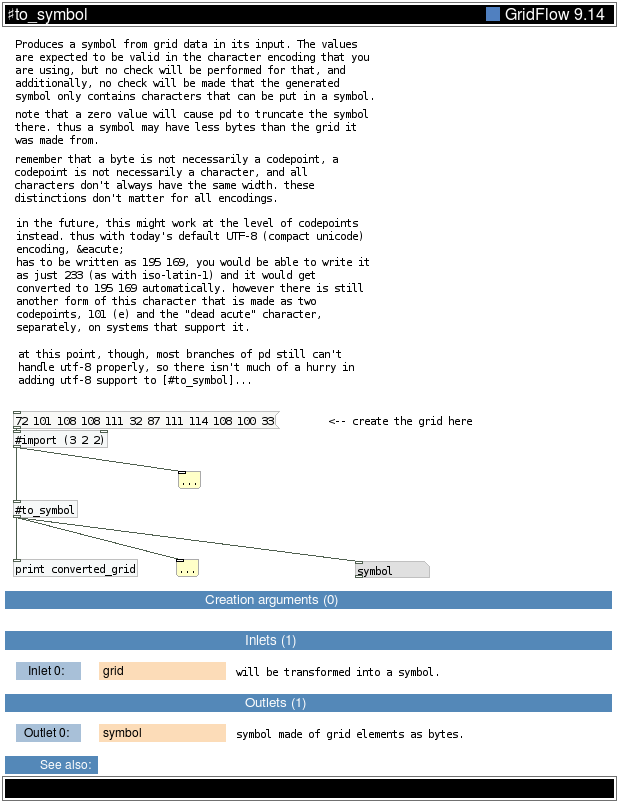
<-- create the grid here note that a zero value will cause pd to truncate the symbol there. thus a symbol may have less bytes than the grid it was made from. remember that a byte is not necessarily a codepoint, a codepoint is not necessarily a character, and all characters don't always have the same width. these distinctions don't matter for all encodings. Produces a symbol from grid data in its input. The values are expected to be valid in the character encoding that you are using, but no check will be performed for that, and additionally, no check will be made that the generated symbol only contains characters that can be put in a symbol. will be transformed into a symbol. symbol made of grid elements as bytes. in the future, this might work at the level of codepoints instead. thus with today's default UTF-8 (compact unicode) encoding, é ; has to be written as 195 169, you would be able to write it as just 233 (as with iso-latin-1) and it would get converted to 195 169 automatically. however there is still another form of this character that is made as two codepoints, 101 (e) and the "dead acute" character, separately, on systems that support it. at this point, though, most branches of pd still can't handle utf-8 properly, so there isn't much of a hurry in adding utf-8 support to [#to_symbol]...